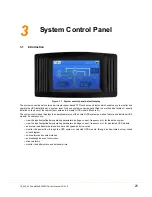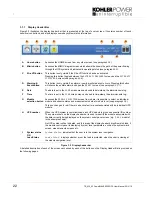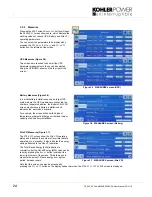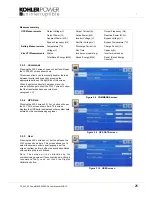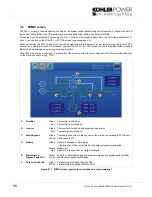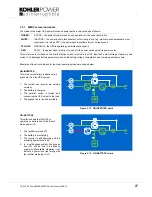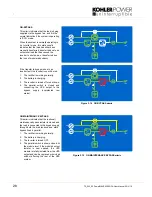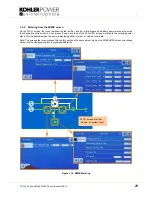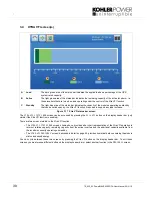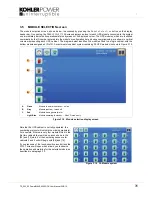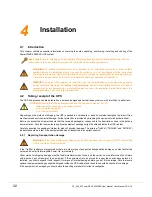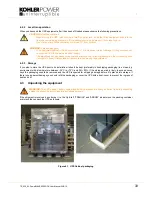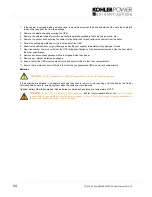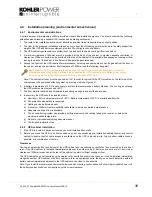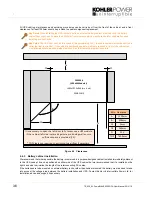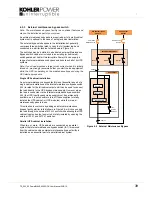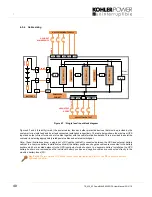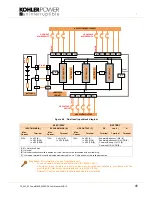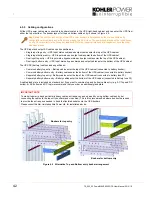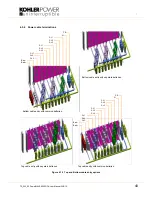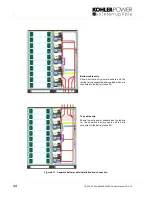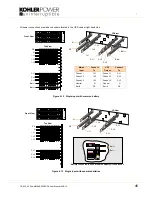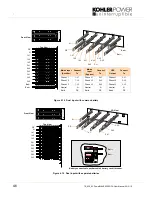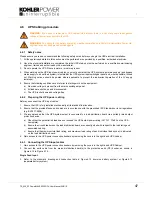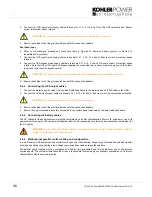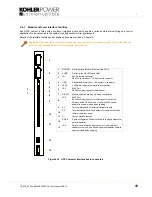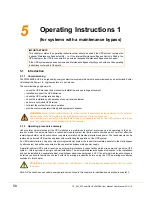
TS_622_02 PowerWAVE 9500DPA User Manual 26/2/19
35
:
4.4
Installation planning (environmental & mechanical)
4.4.1 Environmental considerations
A certain amount of pre-planning will help provide a trouble-free installation process. You should consider the following
guidelines when planning a suitable UPS location and operating environment.
1. The route to the installation location must allow the equipment to be transported in an upright position.
2. The floor at the proposed installation site and en-route from the off-loading point must be able to safely support the
weight of the UPS and battery equipment, plus fork lift or trolley jack during transit.
3. The UPS cabinet requires space to bottom/front, top and back to enable cooling airflow (see below).
4. A minimum clearance of 300mm must be provided at the back of the cabinet to provide adequate ventilation. A
clearance of 400mm should also be provided at the top of the cabinet if the available free passage of cooling airflow
leaving the back of the cabinet is insufficient to dissipate the generated heat.
5. Access to all parts of the UPS required for maintenance, servicing and user operation can be gained from the front of
the cabinet and require a minimum front clearance of 1500mm (see the following ‘key point’).
Note: The cabinet left door must be opened by 135° in order to remove/fit the UPS modules, so the left side of the
cabinet cannot be positioned directly against a projecting wall (see Figure 4.2).
6. A battery temperature of 20°C is necessary to achieve the recommended battery life span. The cooling air entering
the UPS modules must not 40°C.
7. The floor material should be non-flammable and strong enough to support the heavy load.
8. In summary, the UPS should be located where:
a) Humidity (< 95%) and temperature is 0~20°C. Battery temperature of 20°C to maximise battery life.
b) Fire protection standards are respected.
c) Cabling can be performed easily.
d) A minimum 1500mm front accessibility is available for service or periodic maintenance.
e) Adequate cooling air flow is available.
f) The air conditioning system can provide a sufficient amount of air cooling to keep the room at, or below, the
maximum desired temperature.
g) No dust or corrosive/explosive gases are present.
h) The location is vibration free.
4.4.2 UPS cabinet installation
1. If the UPS is located in bayed enclosures, you must install partition walls.
2. Before you move the UPS to its final position carry out any necessary pre-installation cabling (power and control
cables) to ensure that full cable access is available once the UPS is placed in-situ. Top or bottom cable access is
possible, or a combination of the two.
Clearances
Cooling air enters the front and bottom of the UPS cabinet and is extracted by ventilation fans mounted on the cabinet
rear. If the UPS cabinet is installed immediately adjacent to another cabinet, battery enclosure or wall, a minimum
clearance of 300mm is required at the rear of the cabinet to permit sufficient cooling air flow.
The UPS cabinet does not require any side clearance for ventilation or service access, so it can be installed immediately
alongside another UPS cabinet or battery cabinet to form an equipment suite. Ideally, you should install the external
battery cabinet immediately adjacent to the UPS cabinet or as close to it as possible.
Note: If you install the recommended external battery cabinet or battery rack supplied by
Kohler Uninterruptible Power Ltd.
the battery cabinet itself does not require any side or rear clearance.
Key Point:
The UPS modules are large and heavy, and require two persons to install them manually. A
purpose-designed lifting trolley is available which enables the UPS modules to be installed by one person;
however, where used, the front clearance must be a minimum of 2500mm.

